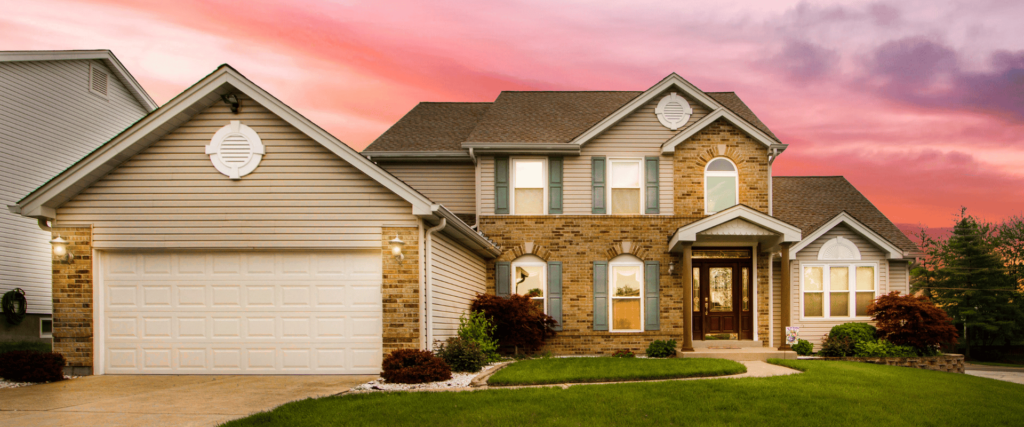When it comes to home improvement projects, few things can transform the exterior of your home as dramatically as a new garage door. Often overlooked, the garage door is one of the most prominent features of your home’s facade, accounting for up to 30% of your front exterior. Updating this key element can significantly boost your home’s curb appeal, enhance its value, and improve functionality. In this post, we’ll explore the benefits of upgrading your garage door, discuss popular styles, and guide you in choosing the right one for your home.

Why Upgrade Your Garage Door?
Upgrading your garage door isn’t just about aesthetics; it’s a smart investment that offers a range of benefits:
Boost Curb Appeal: A new garage door can instantly enhance the appearance of your home. Whether you choose a modern, rustic, or traditional style, the right door can complement your home’s architecture and make it stand out in the neighborhood.
Increase Home Value: According to real estate experts, replacing an outdated garage door can offer one of the highest returns on investment for home improvement projects. A stylish and functional garage door can add significant value to your home, making it more attractive to potential buyers.
Improve Energy Efficiency: Modern garage doors are designed with energy efficiency in mind. Insulated doors help regulate the temperature inside your garage, which can reduce heating and cooling costs—especially if your garage is attached to your home.
Enhance Security: Newer garage doors come equipped with advanced security features, such as rolling code technology that changes the access code every time the remote is used. This can help protect your home from break-ins and ensure your family’s safety.
Reduce Maintenance: If your current garage door is old and worn out, you may be spending more time and money on repairs than you’d like. Upgrading to a new, low-maintenance door can save you the hassle and cost of frequent upkeep.
Popular Garage Door Styles
Choosing the right garage door style is crucial to enhancing your home’s curb appeal. Here are some popular options to consider:
Carriage-House Style:
Description: Inspired by the doors of old carriage houses, this style features rustic, barn-like details, including decorative hardware, crossbuck panels, and windows. It’s perfect for homes with a traditional or farmhouse aesthetic.
Material Options: Wood, steel, or composite materials.
Modern Style:
Description: Sleek and minimalist, modern garage doors are characterized by clean lines, large glass panels, and metallic finishes. This style complements contemporary homes and adds a touch of sophistication to your exterior.
Material Options: Aluminum, glass, or steel.
Traditional Style:
Description: Classic and versatile, traditional garage doors feature raised panels and simple designs that work well with most architectural styles. They’re a safe choice for homeowners looking for a timeless, elegant look.
Material Options: Steel, wood, or fiberglass.
Custom Design:
Description: For homeowners who want something truly unique, custom-designed garage doors offer endless possibilities. You can work with a manufacturer to create a door that matches your home’s architecture and reflects your personal style.
Material Options: Custom options in wood, steel, or composite materials.
Material Matters: Choosing the Right Garage Door Material
The material you choose for your garage door will affect its appearance, durability, maintenance needs, and cost. Here’s a breakdown of the most common materials:
Steel:
Pros: Durable, low-maintenance, and available in a variety of styles and finishes. Steel doors can also be insulated to improve energy efficiency.
Cons: Susceptible to dents and may rust if not properly maintained.
Wood:
Pros: Offers a natural, warm appearance that can be customized with stains or paint. Wood doors are ideal for traditional or rustic homes.
Cons: Requires regular maintenance, such as painting or staining, to protect against moisture and warping.
Aluminum:
Pros: Lightweight, rust-resistant, and often used in modern designs with large glass panels. Aluminum doors are a great option for contemporary homes.
Cons: Less durable than steel and can dent more easily.
Fiberglass:
Pros: Resistant to dents and cracks, and can be designed to mimic the look of wood without the maintenance. Fiberglass doors are also energy-efficient.
Cons: Can yellow or fade over time, especially in harsh sunlight.
Composite Materials:
Pros: Combines the durability of steel with the aesthetic appeal of wood. Composite doors are low-maintenance and resistant to rot, warping, and insect damage.
Cons: Can be more expensive than other materials.
Professional Installation: The Key to a Successful Upgrade
While DIY projects can be rewarding, installing a garage door is a complex task best left to professionals. Proper installation is crucial for ensuring the door operates safely and efficiently. A professional installer will:
Ensure Proper Alignment: Garage doors need to be perfectly aligned to function correctly. A professional will make sure the tracks, springs, and rollers are properly aligned, reducing the risk of operational issues.
Install Safety Features: Modern garage doors come with safety features like auto-reverse and sensors. A professional installer will ensure these features are correctly set up to protect your family from accidents.
Offer Warranties and Support: Most professional installers provide warranties on their work, giving you peace of mind that any issues will be addressed promptly.
Conclusion
A new garage door is more than just an upgrade—it’s an investment in your home’s appearance, value, and functionality. Whether you choose a carriage-house style for a classic look or a sleek, modern design, the right garage door can significantly enhance your home’s curb appeal. Don’t overlook the importance of professional installation to ensure your new door operates safely and efficiently.